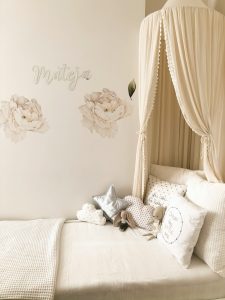Fun Science at Home: Exploring the Senses with Dried Herbs

Dried herbs come in all smells and textures, and they’re all lovely to sense in their own unique way. While most people use dried herbs for cooking meals and flavouring dishes, their aromatic and long-lasting nature holds a plethora of use cases both inside and outside the kitchen.
If you have a dried herb collection at home or are planning to grab a couple of them, there are many ways you can tinker with these herbs in unique and wonderful ways. These herbs aren’t only fragrance enhancers, they’re also complex organic compounds that hold untapped sensory potential.
So if you’re looking to harness a dried herb’s potential in one way or another, you’re in the right place. We’ll highlight some fun experiments that you can consider to explore herbal properties that you may otherwise not even know existed.
And don’t worry—these are all beginner-friendly scientific projects that the entire family can join in on.
Let’s get started!
A Primer on Dried Herbs
Before diving straight to the list of experiments you can take on with your dried herbs, it’s important to understand the underlying basics surrounding them.
In essence, dried herbs are a preserved and concentrated form of an aromatic, herbaceous plant. Unlike fresh plants, dried herbs have no moisture, which prolongs their shelf life and adds a new and more intense flavour when used for culinary purposes.
That said, dried herbs don’t just end up in your food. They are a staple in a variety of applications, from serving as alternative natural remedies to enhancing a room’s fragrance. Their inherent versatility makes them an engaging and fun tool to use for science experiments, DIY crafts, and practical household projects.
As previously mentioned, there are many dried herbs and botanicals that can be used for scientific and creative pursuits.
Here are a couple of notable herbs and their dried forms’ use cases:
Basil: Used in pasta sauces and stews to add a sweeter and peppery flavour.
Oregano: Can be used as a marinade to infuse an earthy taste or as a pest deterrent.
Rosemary: A woody flavour enhancer that can also be used in nature-themed DIY projects.
Thyme: Can be used as an herbal fragrance enhancer in bathrooms and bedrooms.
Mint: A cool and fresh herb that can be used in cooking as a garnish while also helping aid indigestion.
Sage: A savoury and slightly peppery herb that can be dried and burned to help freshen or cleanse indoor spaces.
Lavender: Can be used as an essential oil or a DIY craft to promote sleep and relaxation.
Chamomile: A mild herb that can be brewed into a calming tea or as an herbal bath addition for skincare.
Lemongrass: Another herbal bath addition that’s known for its citric properties. Also acts as an effective pest deterrent.
As seen above, each of these dried herbs is more than just a flavour enhancer; they also have different practical uses that distinguish them from one another beyond the kitchen setting. This can be attributed to the inherently different compounds between each herb type.
With the sheer variety of dried herbs out there, you’re in no shortage of endless creativity and educational projects. These herbs may mainly be used for cooking, but their use case extends far beyond that. You just have to make sure that they’re properly sourced from reputable retailers like Austral Herbs and kept in airtight containers to ensure freshness.
Fun Scientific Experiments With Dried Spices
If you’re curious to see how you can incorporate fun scientific projects with dried herbs, then you’re in the right place.
Let’s explore some of these fun, herb-filled experiments that you can do at home over a weekend afternoon!
Dried Herb Pest Spray
Dealing with an insect infestation or a roaming pest problem? Not keen on calling your local exterminators or taking down your walls just yet?
If you said yes to both, you can consider using dried herbs to solve your ongoing pest issue. Unlike commercial pest deterrents, you don’t need to rely on harmful chemicals to eliminate pests from breaching into your home or property. This makes it a great sustainable deterrent that’s also environmentally friendly.
To make a pest spray, you can crush 2 tablespoons of a dried herb of your choice and simmer it in a cup of water for about five minutes. Then, transfer the solution to a spray bottle. You can then use the spray around entry points in your vicinity..
If you’re wondering what herb works best, the answer is it depends. Certain animals and insects react negatively based on the pest spray’s underlying components.
For instance, if you’re dealing with a mosquito infestation, lemongrass-based pest sprays may be optimal because of their high citric content. If your garden attracts moths and flies, spraying the area with a dried rosemary solution (or sprinkling dried rosemary around the vicinity) can discourage these critters from entering your garden.
Herbal Baths
Another fun way to explore the prowess of dried herbs is by soaking your skin in an herb-infused tub of water.
This self-care method not only puts your mind and body at ease, but the herbal elements also come with skin-soothing and health-boosting properties that a normal bath wouldn’t be able to give.
In fact, herbal baths are a traditionally acknowledged wellness ritual in different parts of the world, like in the mountain province of Sapa, Vietnam—a testament to the therapeutic benefits of this form of healing.
What makes herbal baths therapeutic is the variety of herbs and spices infused in the concoction. Unlike store-bought bath products, there are no synthetic fragrances or additives in herb baths. They’re wholly natural and just as fragrant and beneficial, if not more, than their synthetic counterparts.
Some great herbs to infuse in the bath are lavender and chamomile. These herbs have relaxing properties that make it easy to unwind. To gain a more rejuvenating and invigorating feeling, citric herbs like lemongrass can also be infused into the bathwater.
Herbal Bathroom Fragrance
Arguably, one of the best ways to experience the beauty of dried herbs is by smelling them. They each hold their own scent profile, and for the most part, they’re all pleasant to sniff in their own unique way.
In fact, these dried herbs are often used as fragrance for places like bathrooms that may collect bad scents. These herbs help promote an aroma that makes these spaces more inviting and cosy to unwind in, as opposed to the dirty and grimy feeling they typically impose on others.
You can use one dominant dried herb to create the base aroma, then complement it with one or two secondary herbs for depth.
For example, dried lavender serves as a great base for its calming, floral properties. Its scent can then be further accentuated by adding dried mint and rosemary for a fresh and earthy undertone. Of course, you can vary this composition up based on what you have and what herbal scents you prefer.
Once you’ve assembled your chosen herbs, prepare a basket or jar to hold them in one place. Place it in a high or eye-level position in the bathroom, like the shelf or the bathroom vanity. If you’re using a jar, cover the upper lid with a breathable cloth to prevent particles from easily settling or falling into it.
From there, you can leave the concoction alone for most of the day. Every couple of weeks, however, consider slightly crushing the herbs to allow the aroma to continue to waft. Replace when there’s no more fragrance.
Decorative Herbal Displays
Your dried herb project doesn’t have to be solely utility-focused. It can be decorative in nature, and there are many ways that you can design your next dried herbal project.
For instance, you can arrange multiple pots holding various dried herbs inside a wooden tray and put it as a decorative element on your living room coffee table.
Alternatively, you can make a hanging visual frame of dried herbs glued and crafted into a blank canvas. Or, you can put multiple herbs in a glass bowl and layer them in a textured and aesthetically pleasing way.
In any case, there are many ways you can harness your creativity and make an herbal display that’ll elevate your house’s feel.
We hope these creative ideas will give you inspiration to explore different dried herbs for your next home project. All the best in utilising these herbs!





